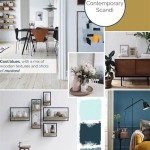```html
What Are The 9 Major Interior Design Styles In Scotland
Scotland, a land steeped in history and natural beauty, possesses a unique design heritage that is reflected in its diverse range of interior design styles. From the grand castles of the Highlands to the cosy cottages of the Lowlands, Scottish interiors are characterized by a harmonious blend of tradition and practicality, often incorporating local materials and reflecting the surrounding landscape. While modern influences are certainly present, a strong emphasis on heritage and craftsmanship remains a defining feature. Here, we explore nine major interior design styles prevalent in Scotland, each offering a distinct aesthetic and a story to tell.
1. Scottish Baronial Style
The Scottish Baronial style, originating in the late 16th century, is characterized by its grandeur and imposing presence. Inspired by the fortified tower houses of the Scottish nobility, this style emphasizes solid construction, asymmetry, and the use of local stone. Interior elements include high ceilings, exposed beams, and large fireplaces, often adorned with intricate carvings and heraldic symbols. Dark wood panelling is common, creating a sense of warmth and formality. Furniture is typically heavy and robust, reflecting the solidity of the architecture. Textiles, such as tartan and tweed, add texture and a touch of Scottish heritage. Colour palettes tend to be rich and earthy, with deep reds, greens, and browns dominating the scheme.
Key features of the Baronial style also often include spiral staircases, turrets (sometimes recreated as purely decorative elements indoors), and a general sense of theatricality. The aim is to evoke a feeling of historical significance and enduring strength.
2. Highland Lodge Style
The Highland Lodge style captures the rugged beauty of the Scottish Highlands, emphasizing natural materials and a sense of rustic comfort. This style typically features exposed stone walls, wooden floors, and large windows that offer stunning views of the surrounding landscape. Furniture is often crafted from reclaimed wood or antlers, creating a connection to the natural world. A large stone fireplace serves as the focal point of the room, providing warmth and a gathering place. Tartan accents are used sparingly, adding a touch of Scottish heritage without overwhelming the space. Colour palettes are inspired by the Highland landscape, with muted greens, browns, and greys dominating the scheme. Think of a roaring fire, comfortable leather armchairs, and the scent of woodsmoke.
The Highland Lodge style prioritizes functionality and durability. It is designed to withstand the harsh weather conditions of the Highlands and provide a comfortable retreat for those seeking respite from the elements. The use of sheepskin rugs and woolen blankets adds to the feeling of warmth and cosiness.
3. Scottish Country Style
The Scottish Country style offers a more relaxed and informal take on traditional Scottish design. This style typically features lighter colours and softer textures, creating a bright and welcoming atmosphere. Walls are often painted in warm shades of cream or beige, providing a neutral backdrop for colourful accents. Furniture is a mix of antique and contemporary pieces, creating a sense of eclecticism and personal expression. Floral patterns and chintz fabrics are commonly used, adding a touch of femininity and charm. Tartan is used more liberally than in the Highland Lodge style, often incorporated into curtains, cushions, and upholstery.
Scottish Country style emphasizes comfort and practicality. It is designed to be a space where family and friends can gather and relax. The use of natural light and fresh flowers adds to the feeling of warmth and vitality.
4. Arts and Crafts Movement in Scotland
The Arts and Crafts movement, which flourished in the late 19th and early 20th centuries, had a significant impact on Scottish interior design. This style emphasizes handcrafted objects, simple forms, and natural materials. Influenced by the designs of Charles Rennie Mackintosh and the Glasgow School, the Scottish interpretation of Arts and Crafts incorporated elements of Art Nouveau and Japanese design. Furniture is typically made from oak or other hardwoods, with clean lines and minimal ornamentation. Stained glass windows, intricate metalwork, and hand-printed wallpapers are common features. Colour palettes tend to be muted and earthy, with greens, browns, and blues dominating the scheme.
The Scottish Arts and Crafts movement celebrated craftsmanship and the beauty of natural materials. It sought to create interiors that were both functional and aesthetically pleasing, reflecting the values of simplicity, honesty, and integrity.
5. Glasgow Style (Art Nouveau)
Closely tied to the Arts and Crafts movement, the Glasgow Style, often considered synonymous with Art Nouveau in Scotland, is strongly associated with the work of Charles Rennie Mackintosh and his contemporaries. This style is characterized by its elegant lines, stylized floral motifs, and distinctive colour palette of grey, white, and pale purple, often accented with touches of silver or black. Furniture is often tall and slender, with elongated forms and geometric patterns. Windows are typically large and rectangular, allowing ample natural light to flood the space. The Glasgow School of Art, designed by Mackintosh, is a prime example of this style.
The Glasgow Style is a refined and sophisticated aesthetic that celebrates artistry and innovation. It is a testament to the creative spirit of the city of Glasgow and its enduring contribution to the world of design.
6. Modern Scottish Style
Modern Scottish style embraces clean lines, minimalist forms, and a focus on functionality. This style typically features open-plan layouts, large windows, and a neutral colour palette. Natural materials, such as wood and stone, are used extensively, adding warmth and texture to the space. Furniture is often sleek and contemporary, with a focus on comfort and practicality. Tartan accents are used sparingly, adding a subtle nod to Scottish heritage. The overall effect is one of understated elegance and timeless appeal.
Modern Scottish style is a fusion of contemporary design principles and traditional Scottish elements. It is a versatile and adaptable style that can be tailored to suit a wide range of tastes and preferences.
7. Coastal Scottish Style
The Coastal Scottish style reflects the beauty and serenity of the Scottish coastline. This style is characterized by its light and airy atmosphere, with walls painted in shades of white, cream, or pale blue. Natural materials, such as driftwood and sea glass, are used to create decorative accents. Furniture is often made from natural wood or wicker, adding to the relaxed and informal feel. Nautical motifs, such as anchors, seashells, and fishing nets, are used to evoke the spirit of the sea. The colour palette is inspired by the coastal landscape, with blues, greens, and greys dominating the scheme.
Coastal Scottish style emphasizes comfort and relaxation. It is designed to be a space where one can escape the hustle and bustle of daily life and connect with the natural world.
8. Edinburgh New Town Georgian Style
The Edinburgh New Town, a UNESCO World Heritage Site, boasts a distinctive Georgian architectural style that has influenced interior design. Characterized by symmetrical layouts, high ceilings, and large windows, the interiors often reflect this elegant structure. Common features include ornate cornices, decorative plasterwork, and grand staircases. Colour palettes are generally refined, with muted tones of grey, cream, and pale blue. Furniture is typically antique or reproduction Georgian pieces, adding to the sense of historical authenticity. Textiles might include silk or damask, reflecting the affluence of the era. Fireplaces are a focal point, often featuring marble surrounds.
This style prioritizes a sense of formality and grandeur, reflecting the aspirations of the Enlightenment-era residents who commissioned these homes. Attention to detail and high-quality materials are paramount.
9. Contemporary Tartan Style
Moving beyond mere historical reproduction, the Contemporary Tartan style incorporates the iconic Scottish pattern in innovative and modern ways. This involves using tartan in unexpected applications, such as feature walls, upholstered headboards, or even contemporary furniture designs. Colour palettes may deviate from traditional clan tartans, exploring bolder and more modern colour combinations. It can be integrated into minimalist spaces to add a pop of colour and texture or used in maximalist interiors to create a bold statement. Digital printing techniques also allow for unique and customized tartan designs.
The Contemporary Tartan style acknowledges and celebrates Scottish heritage while embracing modern design sensibilities. It demonstrates that traditional motifs can be adapted and reinterpreted to create fresh and exciting interior designs.
```
10 Best Tartan Interiors The Rooms You Ve Ever Seen

The 25 Most Stylish Bothies In Scotland

Scotland S Home Of The Year 2024 Winner Finalists

Why Còsagach Is The New Hygge 10 Tips To Add It In Your Home Foyr

Interior Design Through The Ages National Trust

The Best British Interior Designers To Know Right Now

A Place In Scotland By Banjo Beale Alexander Baxter Waterstones

The Best British Interior Designers To Know Right Now

Arts Crafts And Art Nouveau Influence This 1920 S Red Home

Inside A Cozy Fisherman S Cottage On Scotland Isle Of Mull
Related Posts








